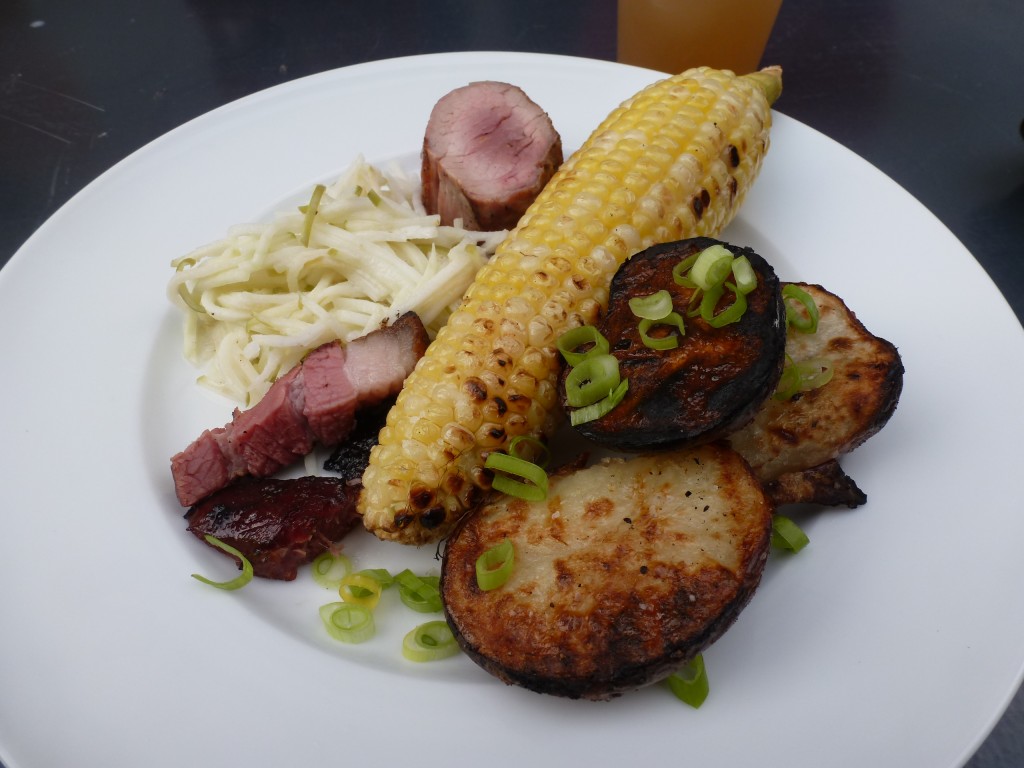 Corn is a New World food. Most of the domesticated plants and animals native to the New World were eventually adopted by Old World cuisines, so much so that it is impossible to imagine the Irish without potatoes, the Tuscans without tomatoes, or the Hungarians without peppers.
Corn is a New World food. Most of the domesticated plants and animals native to the New World were eventually adopted by Old World cuisines, so much so that it is impossible to imagine the Irish without potatoes, the Tuscans without tomatoes, or the Hungarians without peppers.
Corn, however, never made that jump, and while it is an indispensable ingredient in New World cuisines from Ontario to Brazil, it is not widely eaten in Europe.[1] In fact most of the Old World considers it cattle fodder.
I think that most North Americans have very strict regional ideas about corn. It is associated with the food of the south eastern United States in the form of cornbread, grits, and hush-puppies; with Mexico in the form of masa and the many dishes made therefrom, including papusas, tamales, and tortillas.
I grew up in southwestern Ontario, where corn remains one of the handful of ingredients that is never purchased in grocery stores, but always from roadside vendors, in season. In eastern Ontario my father’s family often ate cornbread (which they called johnny cakes) with maple syrup. Corn is so cheap and plentiful that the traditional peameal bacon of the region has been commonly made with cornmeal since the 1950s.
The corn scene in Alberta is much smaller, famously centred around Taber, although there is plenty being growing around Edmonton. We’ve been getting great corn from Tipi Creek for the past few years. And recently the ever-resourceful Judy came across a farmer west of Edmonton who grows great corn and sells it cheap. Needless to say, many an ear has been husked and devoured in our home.
Corn on the cob is one of my favourite things to eat in late summer – especially grilled so that some of the kernels are black, and of course slathered with butter – but when there’s lots of corn around, I make some of these classic preparations.
How to Eat Corn
- Corn Chowder
- Creamed Corn
- Homemade Cornmeal
- Cornbread
- Leftover Cornbread: Cornbread Stuffing and Cornbread Pudding
- Corn Fritters
- Peameal Bacon

1. The one major exception to this rather grandiose generalization is northern Italy, especially the province of Friuli, where the cornmeal porridge polenta sustained the masses from the 1850s till the modern era. While the corn plant was adopted by Italians from its native Mexico, the Mexican process called nixtamalization, which makes the B-vitamin niacin in the corn available to the human body, was not. Pellagra, a niacin deficiency causing all kinds of severe symptoms including soars on the skin and diarrhea, was endemic.